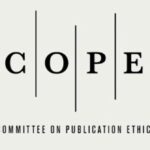Afrah Hasan Ali ¹✉![]() , Salah Abd Al Mahdi Al Janah ²
, Salah Abd Al Mahdi Al Janah ²![]() , Marwah Mohammed Hanaf ¹
, Marwah Mohammed Hanaf ¹![]()
¹College of Agriculture, Al-Muthanna University, Iraq
²College of Agriculture, University of Kufa, Iraq
Received: Apr 6/ Revised: May 6, 2023/ Accepted: May 12, 2023
DOI: https://doi.org/10.47587/CESA.2023.3202
(✉) Corresponding Author: afrah.hasan@mu.edu.iq
Abstract
Plastic has been an important part of our lives for the past decades, as the basic material for many different commodities. The wide use of plastics has significantly impacted many products, especially nutritional ones. Plastic components affect many foods to varying degrees, it depends on the nature of the packaged food, the length of the storage period, and the method of preservation. The high temperatures significantly impacted the migration of many of the compounds present in the plastic coats to the food coat and from there to the consumer, a bad health impact on the consumer. Many researchers and scientists have stressed the need to find suitable alternatives for the manufacture of food coats, these materials were the use of materials derived from non-petroleum polymers, which can decompose and avoid environmental pollution, in addition to not affecting the consumer.
Keywords: Plastic, Food Coat, Plastic Coat Alternatives, Biodegradable Materials.
References
Abdalrazeq, M., Giosafatto, C. V. L., Esposito, M., Fenderico, M., Di Pierro, P., & Porta, R. (2019). Glycerol-plasticized films obtained from whey proteins denatured at alkaline pH. Coatings, 9(5), 322.
Akcan, T., Estévez, M., & Serdaroğlu, M. (2017). Antioxidant protection of cooked meatballs during frozen storage by whey protein edible films with phytochemicals from Laurus nobilis L. and Salvia officinalis. LWT, 77, 323-331.
Al-Hilphy, A. R., Ali, H. I. & Al-Darwash, A. K. (2015). The effect of magnetic field treatment on the characteristics and yield of Iraqi local white cheese. IOSR Journal of Agriculture and Veterinary Science, 8(9), 63-69.
Al-Samarrai, A. R. (2013). Plastics and composites. Ministry of Higher Education and Scientific Research. First edition. 402.
Andrady, A. L., & Neal, M. A. (2009). Applications and societal benefits of plastics. Philosophical Transactions of the Royal Society B: Biological Sciences, 364(1526), 1977-1984.
A.P.M.E. (2006). An analysis of plastics production, demand and recovery in Europe. Brussels: Association of Plastics Manufacturers.
Baltacioğlu, H., & Balköse, D. (1999). Effect of zinc stearate and/or epoxidized soybean oil on gelation and thermal stability of PVC‐DOP plastigels. Journal of Applied Polymer Science, 74(10), 2488-2498.
Del Mar Contreras, M., Lama-Muñoz, A., Gutiérrez-Pérez, J. M., Espínola, F., Moya, M., & Castro, E. (2019). Protein extraction from agri-food residues for integration in biorefinery: Potential techniques and current status. Bioresource Technology, 280, 459-477.
Del Carmen Beristain-Bauza, S., Mani-López, E., Palou, E., & López-Malo, A. (2017). Antimicrobial activity of whey protein films supplemented with Lactobacillus sakei cell-free supernatant on fresh beef. Food microbiology, 62, 207-211.
Gruber, P. R., Drumright, R. E., & Henton, D. E. (2000). Polylactic acid technology. Adv. Mater, 12(23), 1841-1846.
Teuten, E. L., Saquing, J. M., Knappe, D. R., Barlaz, M. A., Jonsson, S., Björn, A. & Takada, H. (2009). Transport and release of chemicals from plastics to the environment and to wildlife. Philosophical transactions of the royal society B: biological sciences, 364(1526), 2027-2045.
Eriksen, M., Lebreton, L. C., Carson, H. S., Thiel, M., Moore, C. J., Borerro, J. C. & Reisser, J. (2014). Plastic pollution in the world’s oceans: more than 5 trillion plastic pieces weighing over 250,000 tons afloat at sea. PloS one, 9(12), e111913.
F.D.A. (2018). Food Ingredients and Packaging Terms.Ingredients Packaging Labeling/Definitions/default.htm.
Fernández‐Espada, L., Bengoechea, C., Cordobés, F., & Guerrero, A. (2016). Thermomechanical properties and water uptake capacity of soy protein‐based bioplastics processed by injection molding. Journal of Applied Polymer Science, 133(24).
Galdeano, M. C., Mali, S., Grossmann, M. V. E., Yamashita, F., & García, M. A. (2009). Effects of plasticizers on the properties of oat starch films. Materials Science and Engineering: C, 29(2), 532-538.
Guern, C. L. (2019). When the Mermaids Cry: The Great Plastic Tide. Available online: www.plastic-pollution.org (accessed on 10 May 2019).
Guilbert, S., Cuq, B., & Gontard, N. (1997). Recent innovations in edible and/or biodegradable packaging materials. Food Additives & Contaminants, 14(6-7), 741-751.
Guilbert, I., Psomiadou, E., Nakayama, A., Aiba, S. and Yamamoto, N. (1997b). Edible films made from gelatin, soluble starch, and polyols, part 3. Food Chem 1997;60(4):593–604.
Han, J. H. (Ed.) (2014). Innovations in Food Packaging, 2nd ed.; Academic Press: Cambridge, MA, USA. 1–624.
Hileman, B. (2002). FDA suggests replacing DEHP in plastics. Chemical & Engineering News, 80(37), 6-6.
Hopewell, J., Dvorak, R. & Kosior, E. (2009). Plastics recycling: challenges and opportunities. Phil. Trans. R. Soc.B 364, 2115–2126. doi:10.1098/rstb.2008.0311.
Hoppe, M., De Voogt, P., & Franz, R. (2016). Identification and quantification of oligomers as potential migrants in plastics food contact materials with a focus in polycondensates–A review. Trends in Food Science & Technology, 50, 118-130.
ISO (International Organization for Standardization). (2006). ISO 14040:2006—Environmental management—Life cycleassessment—Principles and framework. Geneva, Switzerland: In-ternational Organization for Standardization (ISO).
Jerez, A., Partal, P., Martinez, I., Gallegos, C., & Guerrero, A. (2005). Rheology and processing of gluten-based bioplastics. Biochemical engineering journal, 26(2-3), 131-138.
Kambia, K., Dine, T., Gressier, B., Bah, S., Germe, A. F., Luyckx, M. & Gottrand, F. (2003). Evaluation of childhood exposure to di (2-ethylhexyl) phthalate from perfusion kits during long-term parenteral nutrition. International journal of pharmaceutics, 262(1-2), 83-91.
Karmaus, A. L., Osborn, R., & Krishan, M. (2018). Scientific advances and challenges in safety evaluation of food packaging materials: Workshop proceedings. Regulatory Toxicology and Pharmacology, 98, 80-87.
Kfoury, G., Raquez, J. M., Hassouna, F., Odent, J., Toniazzo, V., Ruch, D., & Dubois, P. (2013). Recent advances in high performance poly (lactide): from “green” plasticization to super-tough materials via (reactive) compounding. Frontiers in chemistry, 1, 32.
Koch, H. M. & Calafat, A. M. (2009). Human body burdens of chemicals used in plastic manufacture. Phil.Trans. R. Soc. B 364, 2063–2078.
Lakshmi, S., & Jayakrishnan, A. (1998). Migration resistant, blood-compatible plasticized polyvinyl chloride for medical and related applications. Artificial organs, 22(3), 222-229.
Li, S. (1999). Hydrolytic degradation characteristics of aliphatic polyesters derived from lactic and glycolic acids. Journal of Biomedical Materials Research: An Official Journal of The Society for Biomaterials, The Japanese Society for Biomaterials, and The Australian Society for Biomaterials, 48(3), 342-353.
Li, X., Ying, G. G., Su, H. C., Yang, X. B., & Wang, L. (2010). Simultaneous determination and assessment of 4-nonylphenol, bisphenol A and triclosan in tap water, bottled water and baby bottles. Environment international, 36(6), 557-562.
Lim, L. T., Auras, R., and Rubino, M. (2008). Processing technologies for poly (lactic acid). Prog. Polym. Sci. 33, 820–852. doi: 10.1016/j.progpolymsci.
Magdi. D. P., Daleen, D., Merwe, W., Louise and Susanna, M. E. (2021). Assessing Knowledge and Use Practices of Plastic Food Packaging among Young Adults in South Africa: Concerns about Chemicals and Health.
Martínez-Ibarra, A., Martínez-Razo, L. D., MacDonald-Ramos, K., Morales-Pacheco, M., Vázquez-Martínez, E. R., López-López, M. & Cerbón, M. (2021). Multisystemic alterations in humans induced by bisphenol A and phthalates: Experimental, epidemiological and clinical studies reveal the need to change health policies. Environmental Pollution, 271, 116380.
Meeker, J. D., Sathyanarayana, S., & Swan, S. H. (2009). Phthalates and other additives in plastics: human exposure and associated health outcomes. Philosophical transactions of the royal society B: biological sciences, 364(1526), 2097-2113.
Olsen, G. W., Burris, J. M., Burlew, M. M., & Mandel, J. H. (2003). Epidemiologic assessment of worker serum perfluorooctanesulfonate (PFOS) and perfluorooctanoate (PFOA) concentrations and medical surveillance examinations. Journal of occupational and environmental medicine, 260-270.
Ong, H. T., Samsudin, H., Soto-Valdez, H. (2020). Migration of endocrine-disrupting chemicals into food from plastic packaging materials:An overview of chemical risk assessment, techniques to monitor migration, and international regulations. Crit. Rev. Food Sci. Nutr. 1–23.
Ong, H. T., Samsudin, H., & Soto-Valdez, H. (2022). Migration of endocrine-disrupting chemicals into food from plastic packaging materials: an overview of chemical risk assessment, techniques to monitor migration, and international regulations. Critical reviews in food science and nutrition, 62(4), 957-979.
Rahman, M. & Brazel, C. S. (2004). The plasticizer market: an assessment of traditional plasticizers and research trends to meet new challenges. Progress in polymer science, 29(12), 1223-1248.
Sadan, Z., & De Kock, L. (2020). Plastics: Facts and Futures: Moving beyond pollution management towards a circular plastics economy in South Africa. WWF South Africa.
Samarasinghe, S., Easteal, A. J., & Edmonds, N. R. (2008). Biodegradable plastic composites from corn gluten meal. Polymer International, 57(2), 359-364.
Sunny, M. C., Ramesh, P., & George, K. E. (2004). Use of polymeric plasticizers in polyvinyl chloride to reduce conventional plasticizer migration for critical applications. Journal of Elastomers & Plastics, 36(1), 19-31.
Talsness, C. E., Andrade, A. J., Kuriyama, S. N., Taylor, J. A., & Vom Saal, F. S. (2009). Components of plastic: experimental studies in animals and relevance for human health. Philosophical Transactions of the Royal Society B: Biological Sciences, 364(1526), 2079-2096.
Tharanathan, R. N. (2003). Biodegradable films and composite coatings: past, present and future. Trends in food science & technology, 14(3), 71-78.
Thompson, R. C., Moore, C. J., & Frederick, S. Vom Saal, and Shanna H. Swan. 2009. Plastics, the Environment and Human Health: Current Consensus and Future Trends.” Philosophical Transactions of the Royal Society of London. Series B, Biological Sciences, 364(1526), 2153-2166. doi:10.1098/rstb.2009.0053
Vieira, M. G. A., Da Silva, M. A., Dos Santos, L. O., & Beppu, M. M. (2011). Natural-based plasticizers and biopolymer films: A review. European polymer journal, 47(3), 254-263.
Vilarinho, F., Sendón, R., Van der Kellen, A., Vaz, M. F., & Silva, A. S. (2019). Bisphenol A in food as a result of its migration from food packaging. Trends in Food Science & Technology, 91, 33-65.
How to cite this article
Ali, A. H., Al-Janah, S. A. A. and Hanaf, M. M. (2023). The impact of plastic coat on food products and human health: A review. Chemical and Environmental Science Archives, Vol. 3(2), 29-34. https://doi.org/10.47587/CESA.2023.3202
Licence Article Metadata
This work is licensed under a Creative Commons Attribution 4.0 International License.
![]()












